Communication Encryption
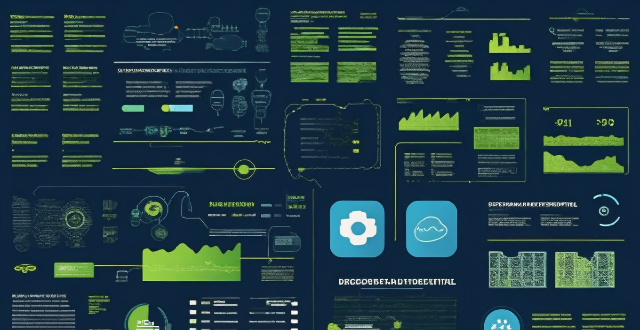
How does encryption work in securing communication channels ?
Encryption is a fundamental technique used to secure communication channels by transforming plaintext data into an unreadable format, known as ciphertext. It involves two main processes: encryption and decryption, and uses algorithms and keys for these processes. There are two primary types of encryption methods: symmetric and asymmetric. Encryption ensures that even if data is intercepted during transmission, it remains unreadable to unauthorized parties. It is vital in various applications to secure communication channels, including email, web browsing, mobile communications, and file transfers.

What is the role of encryption in securing data transmission ?
Encryption is crucial for securing data transmission by converting plain text into unreadable ciphertext, ensuring confidentiality, integrity, and authentication. It protects sensitive information, prevents data tampering, enhances trust, complies with regulations, and reduces the risk of data breaches. Two main types of encryption are symmetric and asymmetric encryption, each using different keys for encryption and decryption.

What is data encryption and how does it work ?
Data encryption is a crucial cybersecurity measure that transforms plaintext into ciphertext, protecting it from unauthorized access. It involves the use of complex algorithms and secret decryption keys. Encryption is significant for securing data at rest, in transit, and during processing, helping meet compliance requirements and reducing financial risks associated with data breaches. Its evolution includes historical precursors and wartime innovations, with AI expected to enhance its capabilities in the future.

How does symmetric key encryption differ from asymmetric key encryption ?
Symmetric key encryption and asymmetric key encryption are two different methods of securing data. Symmetric key encryption uses a single secret key for both encryption and decryption, while asymmetric key encryption uses a pair of keys (public and private). Symmetric key encryption has challenges with key distribution as the secret key must be shared securely between the sender and receiver without being intercepted by an attacker. In contrast, asymmetric key encryption has easier key distribution as the public key can be shared openly without compromising security. In terms of computational complexity, symmetric key encryption is generally faster and more efficient than asymmetric key encryption due to simpler mathematical operations involved. However, asymmetric key encryption is slower and more computationally intensive due to complex mathematical algorithms used.

How does encryption contribute to network security protection ?
Encryption is pivotal for network security, offering robust defense against unauthorized data access and cyber threats. It transforms readable plaintext into ciphertext using sophisticated algorithms, protecting data at rest, in transit, or being processed. Encryption's economic impact is significant, with organizations leveraging it reducing financial impact of data breaches by over USD 220,000. The global encryption software market is projected to hit USD 20.1 billion by 2025. Regulatory compliance and standards are increasingly requiring encryption for data privacy and security. Its historical significance dates back to ancient civilizations, evolving from wartime secrecy to everyday data protection. Network security objectives include preventing unauthorized access, detecting and interrupting cyberattacks, and ensuring authorized user access. Data breaches have costly consequences, with the global average cost standing at USD 4.45 million per incident. A defense in depth approach involves layering multiple security controls between attackers and potential vulnerabilities. In conclusion, encryption is an indispensable component of network security protection, offering a robust defense against unauthorized data access and cyber threats. Its ability to transform plaintext into ciphertext, compliance with regulatory standards, and evolving sophistication through AI illustrate its dynamic role in safeguarding digital communications. For individuals and organizations alike, investing in encryption is not just a recommendation but a necessity for safeguarding against the ever-growing landscape of cyber threats.

Can data encryption prevent data breaches and cyber attacks ?
Data encryption is a crucial security measure that can significantly reduce the risk of data breaches and cyber attacks by converting plain text into an unreadable format. However, it does not completely eliminate the risk of data breaches and cyber attacks. Encryption works through complex algorithms to scramble data so that it appears as random characters, requiring a secret key (or password) to decrypt the data back into its original form. There are two main types of encryption: symmetric and asymmetric. While encryption offers benefits such as confidentiality, integrity, authentication, and non-repudiation, it also has limitations including key management challenges, performance overhead, compatibility issues, human error, and advanced persistent threats (APTs). Therefore, organizations should implement other security measures such as firewalls, intrusion detection systems, regular security audits, and employee training programs to minimize the risk of cyber threats.

What are the different types of data encryption algorithms ?
Data encryption algorithms are crucial for securing digital information. They can be categorized into symmetric key, asymmetric key, hashing, stream ciphers, block ciphers, and hybrid encryption systems. Each type has its own strengths and is used in different scenarios to ensure data privacy and integrity.
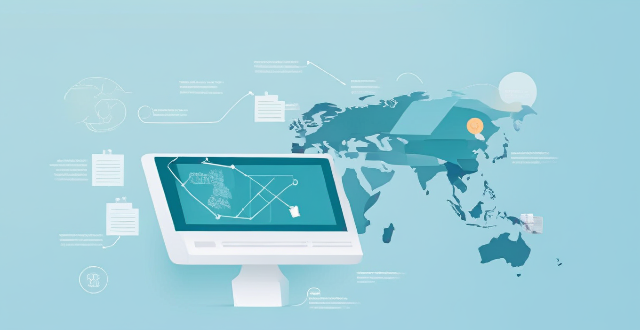
How does satellite communication compare to other forms of communication ?
Satellite communication offers global coverage, high capacitySatellite communication offers global coverage, high capacity higher latency and initial costs and reliability but has higher latency and initial costs compared to terrestrial and wireless communication. Terrestrial communication provides lower latency and moderate reliability at a lower cost, while wireless communication offers convenience and portability at a variable cost. Satellite communication is suitable for remote areas and sensitive applications due to its security features.

What are the benefits of using data encryption in business ?
Data encryption in business offers protection of sensitive information, compliance with legal requirements, enhanced customer trust, defense against cyber threats, and controlled data access. It ensures confidentiality and integrity of communications, helps meet regulatory standards, safeguards personal data, builds customer confidence, mitigates risks of data breaches, guards against malware and ransomware, provides role-based access control, and simplifies key management. This makes encryption an essential tool for securing digital assets and strengthening a company's market position.

What is the role of cybersecurity in protecting communication systems ?
The text discusses the importance of cybersecurity in protecting communication systems by ensuring data confidentiality, integrity, and availability. It outlines measures such as encryption techniques, access control, digital signatures, hash functions, network uptime, redundancy, and disaster recovery plans. Additionally, it suggests best practices like regular updates, firewalls, user awareness training, strong authentication mechanisms, and incident response plans to enhance cybersecurity in communication systems.

How do communication satellites support military operations and intelligence gathering ?
This text discusses how communication satellites support military operations and intelligence gathering, highlighting their role in secure communication channels, wide area coverage, high-speed data transmission, surveillance and reconnaissance, coordination and command, resilience and redundancy.

What are some examples of wireless communication protocols ?
This article provides an introduction to wireless communication protocols, which are sets of rules and standards that enable devices to communicate with each other without the use of physical cables. It discusses several examples of wireless communication protocols, including Bluetooth, Wi-Fi, Zigbee, and LoRaWAN. Each protocol has its own unique features and benefits, making them suitable for different applications. For example, Bluetooth is commonly used for connecting devices such as smartphones, headphones, keyboards, and mice, while Wi-Fi is used for connecting devices to the internet or other networks. Zigbee is commonly used in home automation systems, and LoRaWAN is commonly used in IoT applications. By understanding these protocols, developers can create innovative solutions that improve our daily lives.

**What exactly is end-to-end encryption offered by iCloud ?
End-to-end encryption is a security measure that ensures data transmitted between two endpoints, such as a user's device and iCloud, can only be read by the intended recipient. This means that even if someone intercepts the data during transmission, they will not be able to access or modify it without the proper encryption keys. Key features of end-to-end encryption offered by iCloud include: 1. Data Privacy: End-to-end encryption ensures that your data remains private and secure while being transmitted over the internet. 2. Security: With end-to-end encryption, even Apple cannot access your data because they do not hold the encryption keys. Only you and the recipient of your data have access to the keys needed to decrypt the information. 3. Trustworthiness: By offering end-to-end encryption, iCloud demonstrates its commitment to protecting users' privacy and building trust with its customers. 4. Compliance with Regulations: End-to-end encryption also helps iCloud comply with various regulations related to data protection and privacy, such as the General Data Protection Regulation (GDPR) in Europe and the California Consumer Privacy Act (CCPA) in the United States. 5. User Control: End-to-end encryption gives users more control over their data by allowing them to choose when and how their information is shared. For example, users can decide whether to use end-to-end encryption for specific types of data or for all their data stored in iCloud. Overall, end-to-end encryption offered by iCloud provides several benefits, including enhanced data privacy, security, trustworthiness, compliance with regulations, and user control.

Is data encryption necessary for all types of businesses and industries ?
The Importance of Data Encryption in Modern Business Operations Data encryption is a crucial aspect of modern business operations, ensuring confidentiality, integrity, and availability of sensitive information. Different types of businesses and industries handle varying degrees of sensitive data, requiring robust security measures. Healthcare, finance, e-commerce, and legal sectors are examples where encryption is necessary due to the nature of the data they handle or regulatory requirements. However, the necessity of implementing encryption can depend on factors such as the type and amount of sensitive data, risk assessment, and compliance with legal requirements. To implement data encryption, businesses must assess their needs, develop a data protection policy, choose appropriate technologies, integrate them into systems and processes, and regularly monitor and maintain these measures. While not always necessary for every business, data encryption is often a wise investment that can protect sensitive information and ensure business continuity.
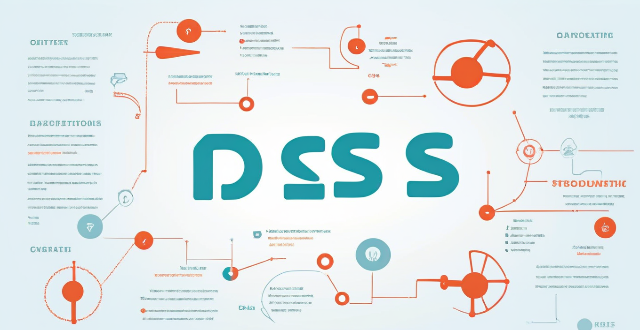
What are the risks associated with weak or improperly implemented data encryption ?
This article discusses the risks associated with weak or improperly implemented data encryption, which can lead to data breaches, loss of trust from customers and stakeholders, legal and regulatory compliance issues, difficulty in recovery, vulnerability to advanced threats, difficulty in detecting breaches, and diminished protection against insider threats. It emphasizes the importance of using strong encryption algorithms, implementing them correctly, and regularly reviewing and updating encryption practices to protect sensitive information and maintain trust.

What are the best practices for secure online communication ?
This article outlines best practices for secure online communication, emphasizing the importance of strong passwords, keeping software up-to-date, being cautious with emails and links, and using encrypted communication channels. It suggests creating unique passwords for each account, updating operating systems and applications regularly, verifying sender identity in emails, and using HTTPS for web browsing and secure messaging apps with end-to-end encryption. By following these practices, individuals can enhance their online communication security and protect themselves from cyber threats and privacy breaches.

What role do communication protocols play in IoT (Internet of Things) devices ?
Communication protocols in IoT devices are crucial for data transmission, interoperability, scalability, security, and error handling. Common protocols include MQTT, CoAP, Zigbee, Bluetooth Low Energy, and LoRaWAN, each with specific features like lightweight design, mesh networking, energy efficiency, long-range communication, and broadcast capabilities. These protocols enable seamless interaction between devices and will continue to drive innovation in the IoT field.
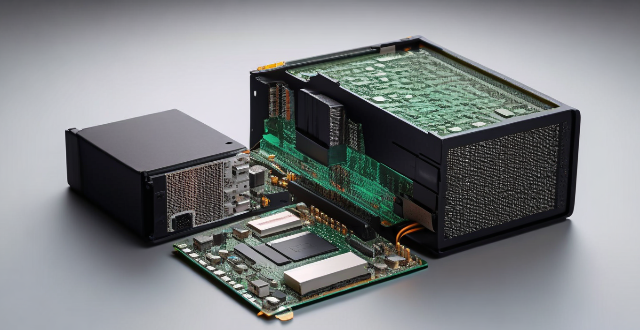
How does data encryption affect computer performance ?
Data encryption is crucial for securing data but can affect computer performance by increasing processor load, memory usage, disk I/O, network latency, and reducing battery life.

What is the significance of communication protocols in cloud computing ?
In the realm of cloud computing, communication protocolsIn the realm of cloud computing, communication protocols role in facilitating communication protocols play a pivotal role in facilitating seamless and efficient data exchange between various components of a cloud infrastructure. These protocols ensure that data is transmitted reliably and securely across different platforms, devices, and applications within the cloud ecosystem. This article delves into the significance of communication protocols in cloud computing by highlighting their key functions and benefits.

What measures can be taken to protect sensitive information during communication ?
Protecting sensitive information during communication is crucial to prevent unauthorized access or interception. Effective measures include encryption, secure communication protocols, multi-factor authentication, access control, and regular updates and patches. Encryption converts data into a coded language that requires a key or password for deciphering. Secure communication protocols like HTTPS, SSH, and SSL/TLS provide an additional layer of security by ensuring encrypted and authenticated communication. Multi-factor authentication adds an extra layer of security by requiring multiple forms of identification before accessing sensitive information. Implementing strict access control policies helps limit who has access to the data and ensures only authorized individuals can view or modify it. Keeping software and systems up-to-date with the latest patches and updates is essential for maintaining the highest level of security. By implementing these measures, organizations can significantly reduce the risk of unauthorized access or interception of sensitive data during transmission.

What are the common causes of communication interference ?
Communication interference can occur due to physical barriers like noise and technology issues, language differences, cultural norms, emotional factors, personal biases, misunderstandings, lack of active listening, and poor message construction. Being aware of these causes can help individuals improve their communication skills and minimize disruptions in various contexts.

How do communication protocols ensure data integrity and security during transmission ?
The text discusses the role of communication protocols in ensuring data integrity and security during transmission. It outlines mechanisms such as checksums, sequence numbers, acknowledgments for maintaining data integrity, and encryption, authentication, and secure protocols for ensuring data security. The article emphasizes that adhering to these rules allows devices to communicate reliably and securely over networks.

Does Wi-Fi 6 support the latest encryption standards for security ?
Wi-Fi 6, the latest wireless networking technology, not only significantly improves performance but also emphasizes security. It introduces several new features and technologies like OFDMA, MU-MIMO, BSS Coloring, and TWT to enhance data protection and user privacy. Wi-Fi 6 supports advanced encryption protocols such as WPA2 and WPA3, with WPA3 offering improved personal and enterprise network security. New technologies like BSS Coloring and TWT further enhance network security by reducing collisions and minimizing unauthorized access risks. The enhanced version of Wi-Fi 6, known as Wi-Fi 6E, utilizes additional frequency ranges to improve data throughput and create new opportunities for advanced security measures. As Wi-Fi 6 networks become more prevalent, security protocols are continually updated to address emerging threats, ensuring that the networks remain secure well into the future.

Can solar flares cause communication interference ?
Solar flares, intense bursts of radiation from the sun's atmosphere, can disrupt communication systems on Earth. This includes shortwave radio signals, satellite communications, and other terrestrial networks. The effects range from signal quality disruption and frequency deviation to satellite link disruptions, GPS accuracy issues, and even physical damage to satellite hardware. While these impacts vary, organizations involved in critical communication operations must be aware of the risks and implement mitigation strategies to minimize potential disruptions.

How can we ensure secure communication in the age of digital technology ?
In today's digital age, secure communication is crucial. Encrypt data using HTTPS and email encryption tools, use strong passwords that are regularly updated, enable two-factor authentication, install antivirus and anti-malware software, be cautious of phishing attacks, use VPNs on public Wi-Fi networks, regularly update your devices, and educate yourself and others about cybersecurity threats and best practices.

How can I ensure the security of my wireless network ?
Securing a wireless network involves changing the default administrator password, using WPA2 encryption, enabling network encryption, using a firewall, and updating firmware regularly.

Why is data encryption important for online security ?
Data encryption is crucial for online security, protecting dataData encryption is crucial for online security, protecting data the financial impact of breaches It has evolved from ancient uses to a critical tool in today's digital landscape, with AI optimizing key management and enhancing algorithms.

What are the benefits and drawbacks of using visual aids in climate science communication ?
Visual aids in climate science communication can enhance comprehension, engagement, and universal appeal but may oversimplify data or mislead if not accurately designed. Creators must balance benefits and drawbacks for effective communication.

How can we prevent communication interference during critical missions ?
To prevent communication interference during critical missions, organizations should use reliable communication systems, minimize environmental factors, train personnel adequately, test equipment beforehand, and use clear and concise language. These strategies can help ensure successful completion of missions by minimizing the risk of communication disruptions.
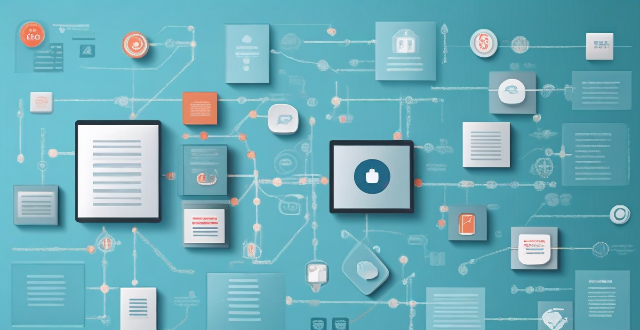
How do wireless communication standards work ?
Wireless communication standards are essential for enabling seamless interactions between devices, and they operate within specific guidelines and protocols. These standards cover areas such as frequency bands, modulation techniques, multiple access methods, error handling, security measures, and compliance testing to ensure interoperability among various devices. Understanding these components is key to grasping how wireless technologies work together to create our interconnected world.